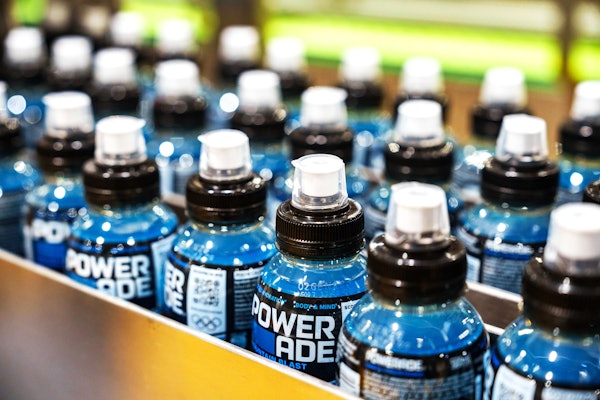
This content was written and submitted by the supplier. It has only been modified to comply with this publication’s space and style.
The study, based on surveys of both marketing professionals and consumers, uncovers significant differences between marketer assumptions and what consumers say actually influences their brand awareness and purchase decisions.
After a year of volatility and transformation, consumers value traditional marketing channels. For nearly a third of consumers (28%), word of mouth is the preferred method for learning about a new brand, product, or service — outpacing social media (23%), cable TV (12%) and online/digital ads (11%). At the same time, a mere 4% of marketers identified word of mouth as a consumer preference for learning about new brands, products, or services. The study also revealed that word of mouth has a higher research-to-purchase ratio (40%) than social media (30%), online/digital ads (27%), or print ads (16%).
“In a tumultuous and challenging year, consumers embraced traditional marketing methods as they sought to discover, research, and ultimately purchase from new brands,” said John Pecaric, President of RRD Marketing Solutions and Business Services. “Based on our survey results, marketers may need to revisit their strategies and assumptions about what customers are looking for and adjust accordingly in order to meet their expectations.”
The survey results underscore four key themes that all point to the power of traditional marketing methods and how social and digital marketing continue to evolve:
Theme 1: It’s time to redefine (and re-engage) word of mouth
Word of mouth traditionally refers to consumers sharing product and brand recommendations with one another verbally. Today, this has evolved to include interactions between acquaintances on social media. Word of mouth outranked all other forms of brand discovery, with the survey findings showing that the majority (55%) of consumers have discovered a new brand, product, or service in the past year through word of mouth, followed by social media (53%). More importantly, 40% of consumers actually purchased a product after discovering it via word of mouth, topping all other channels. Yet only 7% of marketers identified word of mouth as a channel that results in consumer purchases. This division speaks to the continued importance of word of mouth and asks marketers to deliver timely and relevant messaging that gives consumers something to talk about, both in-person and online.
Theme 2: Gen Y is most excited to receive direct mail
More than half (51%) of consumers were more excited to receive direct mail in the past year than they were in the year prior, with the highest levels among Gen Y (65%), Gen Z (57%), and Gen X (53%). Baby Boomers are least likely to be excited about receiving direct mail (36%). While 67% of marketers made significant changes to their marketing strategies in the past year, the consumer data suggests that marketers should continue to fine-tune their efforts and consider re-investing in traditional marketing channels.
Theme 3: Dear retailers, are you ready to return to normal?
The good news for the retail sector is that 62% of consumers are eager to return to their pre-pandemic shopping habits. More than a third (35%) of consumers admit that the changes they made to their shopping habits due to the pandemic will only last less than 6 months. This contrasts with marketers’ assumptions, with 43% expecting consumers not to return to their pre-pandemic shopping habits for another 6-12 months. Consumers also show a preference for retailers who effectively use in-store signage and displays, with a majority (58%) saying that in-store signage is influential to their purchase decisions. Eight in 10 prefer to shop in stores with signage that helps them navigate the store and avoid crowds. These data points suggest that consumers are more eager to return to in-store shopping than many marketers assume and have high expectations, confirming the importance of experience-driven in-store marketing strategies.
Theme 4: Pinterest and TikTok on the rise while influencers wane
While consumers indicated their preference for some forms of traditional marketing channels, their engagement with brands online and via social media continues to evolve, posing additional complexities for marketers looking to connect with their audiences. While 82% of marketers believe influencers — public figures that promote brands, products, or services, often in social media — drive consumer purchases, the reality is that just over a quarter (26%) of consumers say that influencers make them more likely to purchase new products or services.
At least one in three consumers follow brands they like on Facebook, YouTube, and Instagram — and this is where engagement is most likely to happen. Gen Y leads all other surveyed generations with regard to brand engagement on Facebook (42%), while Gen Z leads with regard to brand engagement on YouTube (45%) and Instagram (50%). Marketers overestimated the power of Snapchat, with 21% saying that consumers use the platform to discover new brands, while only 7% of consumers agreed. When it comes to following their favorite brands, consumers prefer Pinterest (21%), TikTok (20%) and Twitter (19%) over Snapchat (16%) and Reddit (11%).
With regard to in-app purchases, 41% of consumers have made an in-app purchase on Facebook, followed by 25% on Instagram, and 11% on Pinterest. Baby Boomers are the least likely to make in-app purchases, but when they do, they overwhelmingly prefer Facebook. Gen X also prefers to make in-app purchases via Facebook. However, nearly half of all survey respondents (47%) have never made an in-app purchase. To read the full report, visit: rrd.com/unexpected.
RRD commissioned twin surveys of U.S. marketing professionals and consumers in the summer of 2021 to provide a comparative analysis of consumer preferences and expectations relating to brands and marketers’ assumptions about those preferences. The RRD surveys were conducted by FINN Partners in July 2021 in the U.S. The surveys were conducted online and the data is weighted to be nationally representative. 250 marketing professionals across a variety of industry sectors and 1,000 consumers participated in the surveys.

























